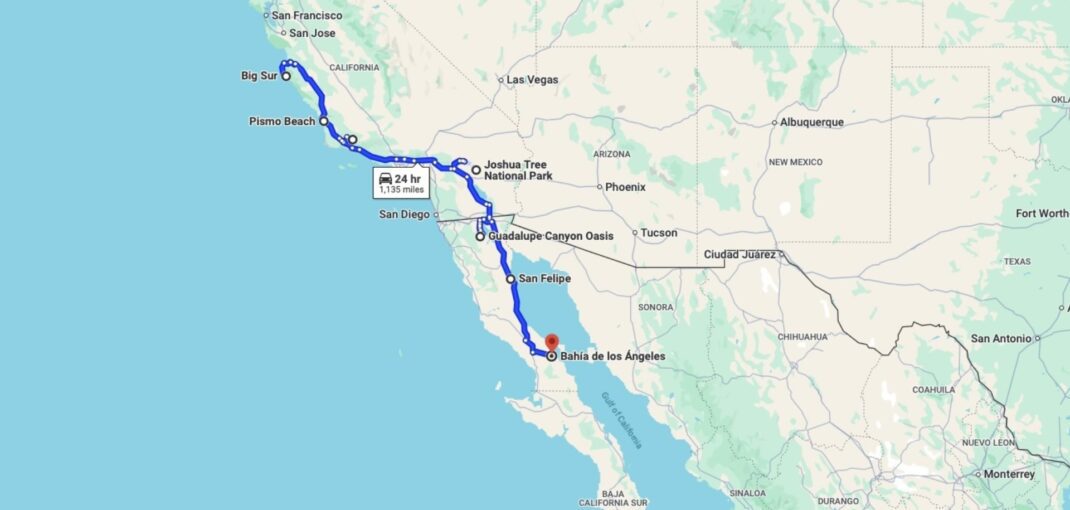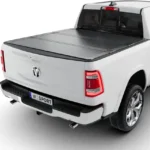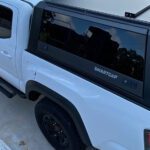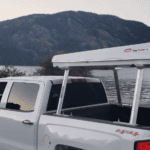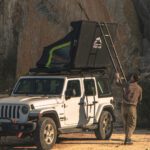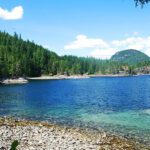We’ve covered some incredible ground so far on this overland journey. In the first article, we ventured from Vancouver Island through stops like Cypress Provincial Park, White Rock, and Deception Pass State Park, getting a taste of the Pacific Northwest’s natural beauty. The second article took us further south, exploring Olympic National Park, the Oregon Coast at Cannon Beach, Crater Lake, and the Redwood Forests, and finally landing in Big Sur.
For your journey from Big Sur to Baja California, we’ve selected six key stops perfect for overlanders and campers: Pismo Beach, Los Padres National Forest, Joshua Tree National Park, Guadalupe Canyon Oasis, San Felipe, and Bahía de Los Ángeles. Each location offers its own unique blend of scenic beauty and camping opportunities, guiding you through both the Pacific Coast and Baja’s breathtaking landscapes. Let’s dive into the details of each stop to help you plan the final leg of your adventure.
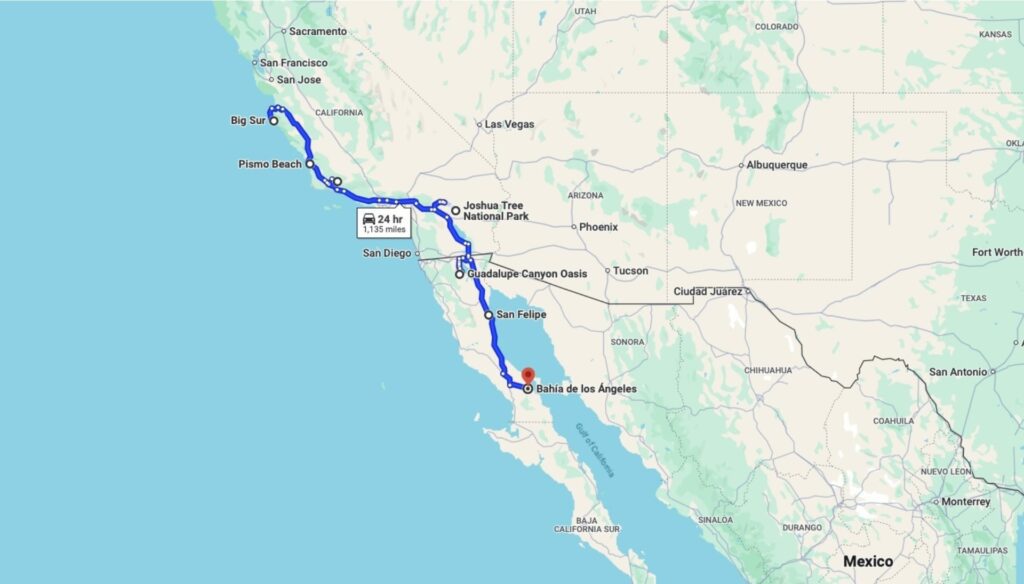
Let’s pick up the journey from Big Sur and head south along the stunning Highway 1 to our first stop: Pismo Beach, California. This drive takes about 2.5 hours and treats you to some of the most picturesque coastal views in the state. On your way, you’ll pass through the charming town of San Luis Obispo, a great spot to grab a meal, fuel up, or take a quick stroll through its historic downtown. The drive is smooth and easy, with the ocean and cliffs keeping you company along the way. As you approach Pismo Beach, the relaxed, beachy atmosphere will quickly settle in.
1. Pismo Beach, California
Why make this stop? Pismo Beach is a haven for both adventurers and those looking to unwind by the sea. Its wide, sandy beaches offer everything from off-road driving to beach camping and jaw-dropping sunsets. For overlanders, Oceano Dunes State Vehicular Recreation Area (SVRA) is a must-visit, being one of the few places in California where you can legally camp and drive right on the beach. Whether your interests lie in surfing, dune buggies, or simply soaking in the ocean’s serenity, Pismo Beach has something for everyone. Skipping it would mean missing out on one of California’s iconic coastal destinations.
Route Details (Big Sur to Pismo Beach): Head south on Highway 1 for approximately 2.5 hours, hugging the coastline as you go. The route is filled with breathtaking ocean views, dramatic cliffs, and plenty of wildlife sightings. If you need a break, San Luis Obispo offers great dining spots and a chance to explore its quirky attractions like Bubblegum Alley.
Camping Spots at Pismo Beach:
Oceano Dunes SVRA: Perfect for overlanders, this site lets you drive right onto the beach and camp with the ocean at your doorstep. It’s a rare experience in California, making it popular among both locals and travelers.
- Fees: 10-30 CAD per night, depending on the season and setup.
- Facilities: Basic, with portable toilets. You’ll need to bring your own water and supplies, as there are no RV hookups.
Pismo Coast Village RV Resort: If you prefer more amenities, this resort offers full hookups, Wi-Fi, showers, and laundry facilities. Located near the beach, it’s a convenient spot to enjoy both the coast and the nearby town.
- Fees: Around 60 CAD per night for a full hookup site.
- Facilities: Full amenities including showers, laundry, and nearby restaurants.
North Beach Campground: A more traditional campsite, this state park campground is a short walk from the beach and accommodates tents, campers, and RVs.
- Fees: 30-50 CAD per night, depending on site and season.
- Facilities: Bathrooms, water, and showers available, but no RV hookups.
For overlanders with roof tents, Oceano Dunes SVRA is ideal for setting up camp right on the sand. It’s spacious and welcoming, offering a safe environment for fellow overlanders to gather. Just be cautious of the tides and park far enough from the water. If you prefer a bit more structure and amenities, North Beach Campground or Pismo Coast Village RV Resort offer sheltered spots with more facilities, especially in poor weather.
Next up, we head inland to explore the rugged beauty of Los Padres National Forest—perfect for overlanding, hiking, and dispersed camping!
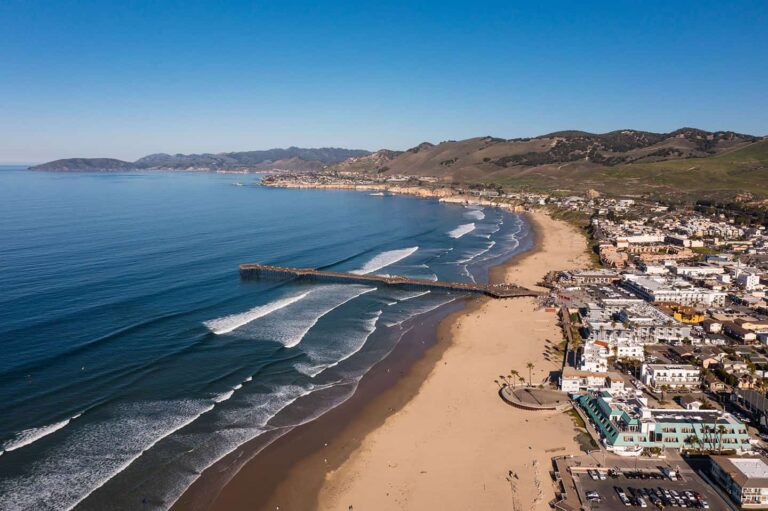
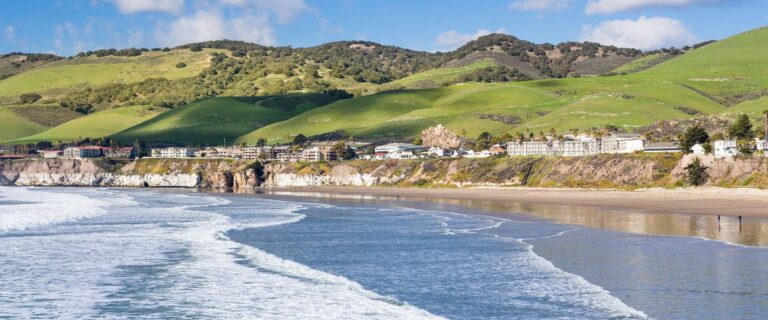
2. Los Padres National Forest, California
Why stop here? Los Padres National Forest is a hidden treasure for overlanders who appreciate solitude and rugged natural beauty. Spanning thousands of acres, it offers everything from dispersed camping to hiking and off-road exploration. The forest boasts diverse landscapes, from dense oak woodlands to chaparral-covered hills, and even snow-capped peaks at higher elevations. It’s the perfect place to disconnect, find peace, and immerse yourself in California’s wild backcountry.
One of the standout features here is the natural hot springs, like Big Caliente Hot Springs, which provide a relaxing break after a long day of adventure. Whether you’re into scenic drives or seeking out remote camping spots far from the crowds, Los Padres delivers an authentic off-the-grid experience.
Route Details (Pismo Beach to Los Padres National Forest): From Pismo Beach, head south on US-101 for about an hour, then take CA-166 inland toward Los Padres National Forest. The drive transitions from coastal views to rolling countryside and mountain landscapes, making it a scenic and enjoyable route.
Camping Options at Los Padres National Forest:
Dispersed Camping: Los Padres is perfect for overlanders looking for freedom. Dispersed camping allows you to set up just about anywhere, giving you the chance to camp in the heart of nature without crowds.
- Fees: Free! Just follow Leave No Trace principles and come fully prepared with your own supplies.
- Facilities: None, so you’ll need to be self-sufficient.
Kirk Creek Campground: If you want a developed site with facilities and stunning views, Kirk Creek is a great option. Nestled by the ocean, it’s just a short drive from the forest’s trails.
- Fees: Around CAD 35 per night.
- Facilities: Bathrooms, picnic tables, and fire pits, but no RV hookups.
Figueroa Campground: Located in the Santa Ynez Mountains, Figueroa is more secluded, offering mountain views and access to trails.
- Fees: Around CAD 25 per night.
- Facilities: Vault toilets, picnic tables, and fire pits.
Overlanding and Roof Tent Parking: Los Padres is an overlander’s dream, with miles of trails and roads to explore. You can safely park and set up your roof tent almost anywhere dispersed camping is allowed. Some of the best spots include East Camino Cielo and Big Pine Road, where you’ll be rewarded with sweeping views of the valleys and peaks.
For those who prefer established campgrounds, Kirk Creek and Figueroa offer secure spots with basic amenities. Just keep in mind that November can bring colder temperatures, especially in higher elevations, so be sure to pack warm gear and check for snow on the roads.
Next, we head to the iconic desert landscape of Joshua Tree National Park! Get ready for a dramatic change in scenery as we leave the mountains behind.
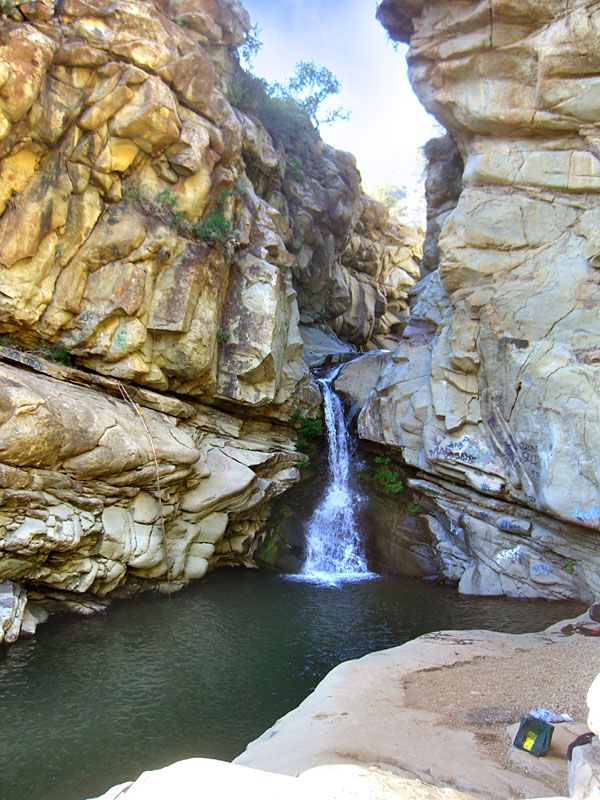
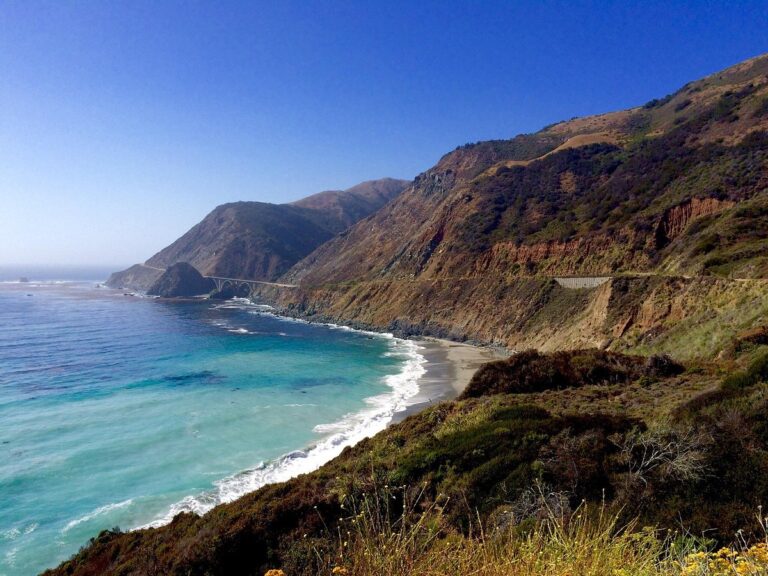
3. Joshua Tree National Park, California
Why stop here?
Joshua Tree National Park stands out as one of the most iconic landscapes in the U.S., famous for its otherworldly rock formations and the unique Joshua Trees scattered across the desert. It’s a top destination for overlanders, campers, and adventurers seeking open skies, rugged terrain, and epic off-road trails. November is a great time to visit with cooler temperatures and fewer visitors, making it an ideal stop on your California journey.
The park offers sweeping desert views, with trails winding through Joshua Tree groves, hidden oases, and scenic points like Keys View, where you can see all the way to Mexico on a clear day. If you love stargazing, Joshua Tree’s dark skies are legendary, offering breathtaking views of constellations and meteor showers.
Route Details (Los Padres National Forest to Joshua Tree National Park):
From Los Padres, head south on CA-33, then merge onto I-5 South. Continue on CA-58 East through Bakersfield, and follow I-10 East until you reach Joshua Tree. The route transitions from mountain roads to desert highways, making for a scenic drive.
Approximate time: 4.5 to 5 hours.
Camping Options at Joshua Tree National Park:
Hidden Valley Campground:
A favorite for both overlanders and rock climbers, Hidden Valley is close to some of the park’s best trails and rock formations.
- Fees: About $20 USD (approx. $27 CAD) per night.
- Facilities: Vault toilets, picnic tables, and fire pits. No water, so pack your own.
Jumbo Rocks Campground:
Known for its giant rock formations, Jumbo Rocks is perfect for stargazing and setting up a roof tent in the middle of the desert.
- Fees: Around $20 USD (approx. $27 CAD) per night.
- Facilities: Vault toilets, fire pits, picnic tables, but no water on-site.
Overlanding and Roof Tent Parking:
Joshua Tree is a paradise for overlanders, with several campgrounds that cater to roof tent setups. Hidden Valley and Jumbo Rocks are popular choices due to their convenient access to trails and key park features. The park also offers dirt roads like Geology Tour Road and Berdoo Canyon Road, which are perfect for high-clearance or 4×4 vehicles looking for more remote desert exploration.
Just remember that dispersed camping is not allowed in Joshua Tree, so be sure to camp at the designated sites. The desert’s conditions can be extreme at night, so it’s crucial to set up in a secure, designated area.
Next, we’ll venture south into Mexico to explore the stunning Guadalupe Canyon Oasis, known for its breathtaking canyon views and private hot springs—a must-see on your adventure!
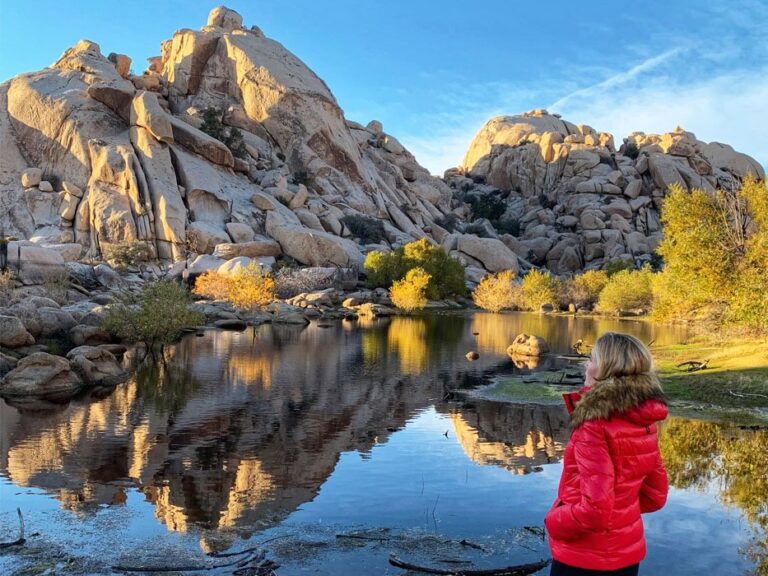
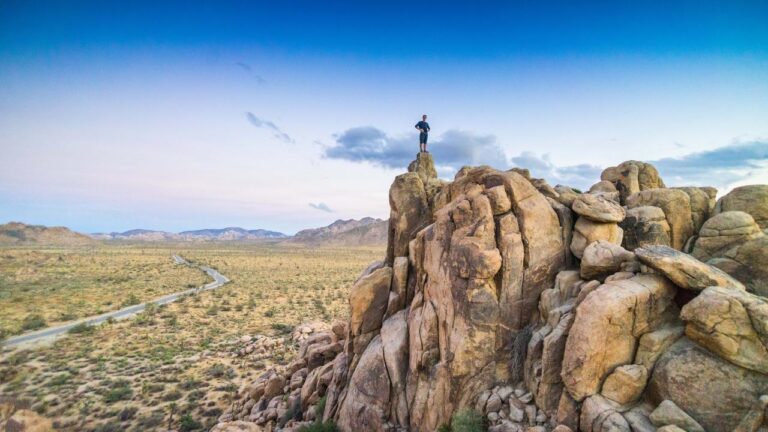
4. Guadalupe Canyon Oasis (Baja California, Mexico)
Why stop here?
Guadalupe Canyon Oasis is a must-visit for overlanders and campers looking to unwind in Baja’s serene desert landscape while soaking in private hot springs. Hidden deep within the canyon, this oasis offers a unique blend of rugged natural beauty and comfort. With towering canyon walls, panoramic desert views, and natural hot pools, it’s the perfect retreat after long days on the road. This off-the-grid destination is ideal for travelers who love peaceful, nature-filled escapes.
Each campsite includes its own hot spring pool, making it the perfect spot to relax after your adventures. The combination of warm desert nights and the soothing hot water creates a tranquil atmosphere unlike any other. If you skip Guadalupe Canyon Oasis, you’ll miss one of the most unique and relaxing stops in all of Baja California.
Route Details (Joshua Tree National Park to Guadalupe Canyon Oasis):
From Joshua Tree, head east on I-10 towards the U.S.-Mexico border, crossing at Calexico/Mexicali. Once in Mexico, follow Highway 2D towards La Rumorosa, then take a dirt road to reach Guadalupe Canyon. It’s about 2 hours from the border, so ensure you’re stocked up on fuel and supplies.
Approximate time: 5 to 6 hours (including border crossing).
Border Crossing:
At the Calexico/Mexicali crossing, U.S. and Canadian citizens can use their passports to enter Mexico. Wait times at the border can vary, so be prepared and declare any gear or food you’re bringing. Guadalupe Canyon is located in a quiet, safe part of Baja, but it’s always wise to check current travel advisories before crossing.
Camping Options at Guadalupe Canyon Oasis:
Campsites with Hot Springs:
Every site at Guadalupe Canyon includes access to a private hot spring pool, making it an ideal spot to relax and rejuvenate.
- Fees: Range from $40 to $125 USD (approx. $55 to CAD 170), depending on campsite size and features like proximity to canyon walls or larger hot springs.
Rustic Cabins:
For those looking for a bit more comfort, rustic cabins with beds and outdoor kitchens are available at some campsites.
- Fees: Starting at $80 USD (approx. CAD 110) per night.
Overlanding and Roof Tent Parking:
Guadalupe Canyon is perfect for overlanders, offering plenty of space to park your 4×4 vehicle right next to your campsite. You can set up a roof tent with ease and enjoy the privacy and peace that the canyon provides. The road leading to the canyon is unpaved, so a high-clearance vehicle is recommended. The area is well-maintained and safe, and the hot springs bring a touch of luxury to your stay.
Overlanding Activities:
While the hot springs are the main attraction, the area also offers hiking through the canyon, wildlife spotting, and ample opportunities for relaxation. If you’re into photography, the stunning canyon walls and desert landscapes provide great shots, especially during sunrise or sunset. This peaceful oasis is an excellent place to recharge before continuing your overlanding journey.
Next, we head further south along Baja’s coastline to the lively town of San Felipe, where the desert meets the Sea of Cortez.
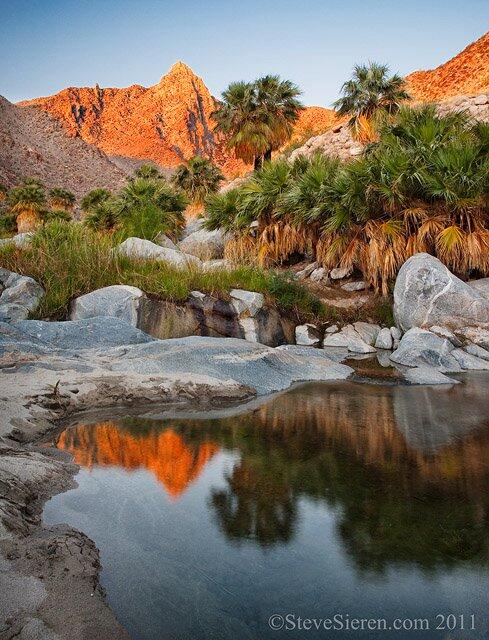
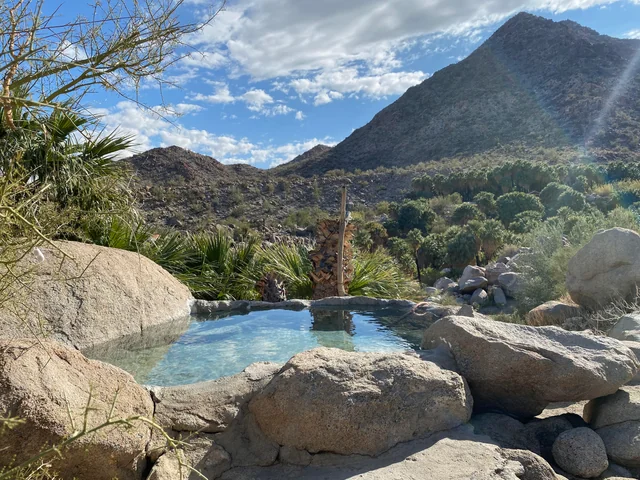
5. San Felipe (Baja California, Mexico)
Why stop here?
San Felipe is a quintessential overlanding destination, combining desert landscapes with the beautiful coastline of the Sea of Cortez. Known for its warm, calm waters and picturesque beaches, it’s the perfect spot for overlanders who enjoy both camping and ocean activities. Whether you want to relax on sandy shores, swim in clear waters, or explore the nearby desert, San Felipe offers a balanced mix of relaxation and adventure. The town has a welcoming, laid-back atmosphere with great seafood, friendly locals, and plenty of places to restock supplies.
For those looking for a mix of beach vibes and outdoor fun, San Felipe is the place to be. Whether you’re interested in fishing, off-roading in the dunes, or simply enjoying a peaceful seaside sunset, this destination has something for everyone. Missing San Felipe would mean overlooking a unique blend of desert and sea that makes Baja California so special.
Route Details (Guadalupe Canyon Oasis to San Felipe):
After leaving Guadalupe Canyon, retrace your path back to Mexican Federal Highway 2, heading towards Mexicali. From there, follow Mexican Federal Highway 5 south along the eastern coast of Baja California until you reach San Felipe. The drive is mostly through arid desert, but as you approach San Felipe, the sparkling blue waters of the Sea of Cortez come into view.
Approximate time: 3 to 4 hours.
Camping Options in San Felipe:
Kiki’s RV Camping Hotel:
Located right on the beach, this campground offers full hookups, showers, and shaded camping spots. It’s a perfect option for overlanders with rooftop tents or campers, providing direct beach access.
- Fees: Around $20 to $30 USD (approx. CAD 27 to CAD 40) per night, depending on the campsite and amenities.
Pete’s Camp:
A popular spot among overlanders, Pete’s Camp offers beachfront camping with basic facilities like restrooms and showers. It’s close to town, making it easy to access restaurants and supplies.
- Fees: $15 to $25 USD (approx. CAD 20 to CAD 33) per night.
Overlanding and Roof Tent Parking:
San Felipe is an excellent location for overlanders, with ample space to park your vehicle and set up a roof tent right by the beach or in more developed campgrounds. The area is safe and well-traveled by fellow overlanders and RVers. The roads to the campgrounds are easy to navigate, and both campsites provide convenient access for vehicles.
Overlanding Activities:
San Felipe offers a variety of activities, from desert exploration to water sports. You can take an off-road adventure into the San Felipe Desert or visit the Valley of the Giants, where towering cacti over 100 years old dominate the landscape. On the water, kayaking, paddleboarding, and fishing are popular, with stunning sunsets over the Sea of Cortez providing the perfect end to each day.
Our next and final stop takes us further south to Bahía de Los Ángeles, where you’ll find a remote, peaceful coastal experience—a fitting close to this leg of your overlanding journey.
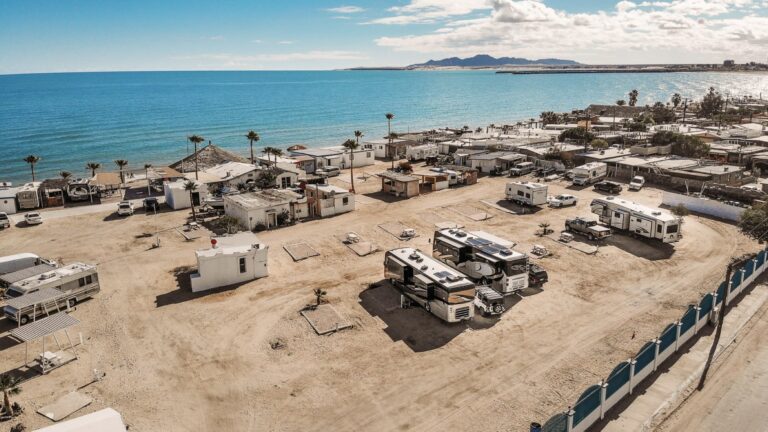
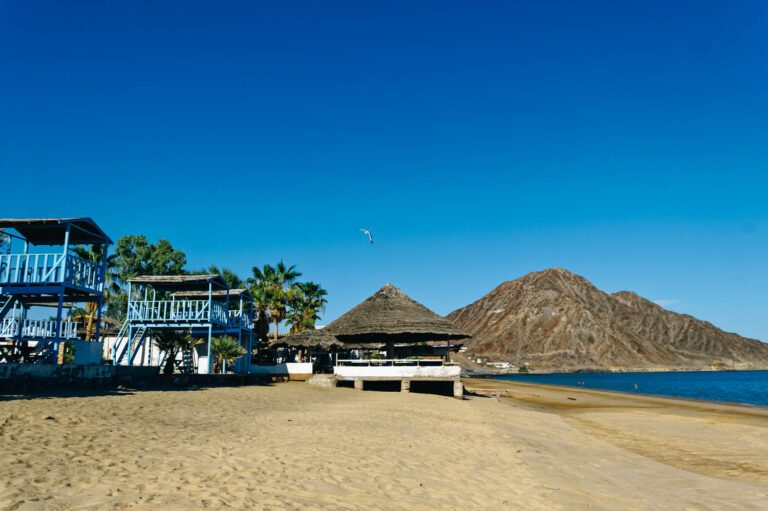
6. Bahía de Los Ángeles (Baja California, Mexico)
Why stop here?
Bahía de Los Ángeles is a hidden treasure along Baja California’s eastern coast, known for its pristine beaches, crystal-clear waters, and rich marine life. It’s far less crowded than other Baja destinations, making it a peaceful retreat for overlanders and campers seeking a deeper connection with nature. The bay is home to dolphins, sea turtles, and even whale sharks, offering unforgettable experiences for wildlife enthusiasts. If you love kayaking, snorkelling, or simply relaxing on quiet beaches, Bahía de Los Ángeles is the perfect stop.
Skipping this destination means missing one of Baja’s most serene, untouched coastal spots. It’s ideal for those who want to relax, explore secluded beaches, or enjoy stargazing under the clearest skies.
Route Details (San Felipe to Bahía de Los Ángeles):
From San Felipe, continue south along Mexican Federal Highway 5 until it merges with Highway 1 at Chapala. From there, head south through Guerrero Negro, then turn east on Highway 12 to reach Bahía de Los Ángeles. The drive offers stunning desert and coastal views as you approach the tranquil bay.
Approximate time: 6 to 7 hours.
Camping Options in Bahía de Los Ángeles:
Daggett’s Beach Camping:
Located right on the bay, this small, quiet campground offers basic amenities like showers and restrooms, along with beach access. It’s the perfect spot to park your vehicle, set up a roof tent, and enjoy the ocean breeze.
- Fees: Around $10 to $20 USD per night (approx. $13 to $27 CAD).
Campo Archelon:
A popular eco-friendly campground, Campo Archelon offers rustic campsites and beach access, ideal for those looking for an off-grid experience with basic facilities.
- Fees: $15 to $25 USD per night (approx. $20 to $33 CAD).
Overlanding and Roof Tent Parking:
Bahía de Los Ángeles is a favorite among overlanders who appreciate a quiet and remote experience. The area is safe for travelers, and there are plenty of beachside spots to park and set up a roof tent. The roads leading to the bay are generally in good condition, and once you arrive, you’ll find ample space to camp and enjoy the natural beauty.
Overlanding Activities:
There’s plenty to explore in Bahía de Los Ángeles, from desert adventures around the bay to activities in the calm waters of the Sea of Cortez. Kayaking, snorkelling, and even boat tours to nearby islands are popular, offering opportunities to see marine life up close. For snorkellers and divers, the waters are teeming with sea life, and during the right season, you might even spot whale sharks.
With Bahía de Los Ángeles behind you, you’ll have reached one of the most tranquil and beautiful spots on your overlanding adventure through Baja California.
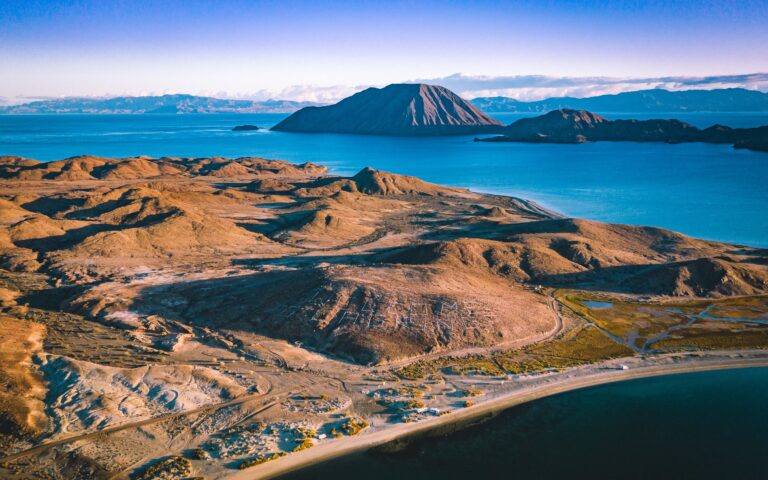
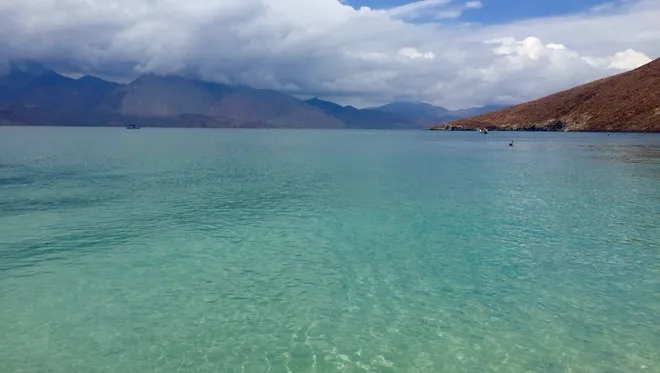
With this final stop, we wrap up our three-part journey from Vancouver Island to Baja California. This road trip has taken you through breathtaking coastal routes, national parks, deserts, and quiet beaches, offering an unforgettable overlanding experience from the Pacific Northwest to the heart of Baja. Along the way, we’ve shared top camping spots, safe areas for overlanders, and must-see attractions that make each stop special.
The full trip can span anywhere from 3 to 5 weeks, depending on how long you linger at each stop and the detours you choose to take. The ideal time to start this adventure is in late October or early November, escaping the colder northern weather and arriving in Baja before winter sets in. For your return journey, March or April is the best time to head back north, as the Pacific Northwest begins to warm up and snow melts, reopening more overlanding routes and camping spots.
Whether you’re a seasoned overlander or a first-time camper, this road trip has something for everyone. From rugged mountains to tranquil beaches, it’s the ultimate overlanding adventure, sure to leave you with memories that last a lifetime. Stay tuned for more guides and trip ideas to help you discover the most beautiful places the world has to offer!

